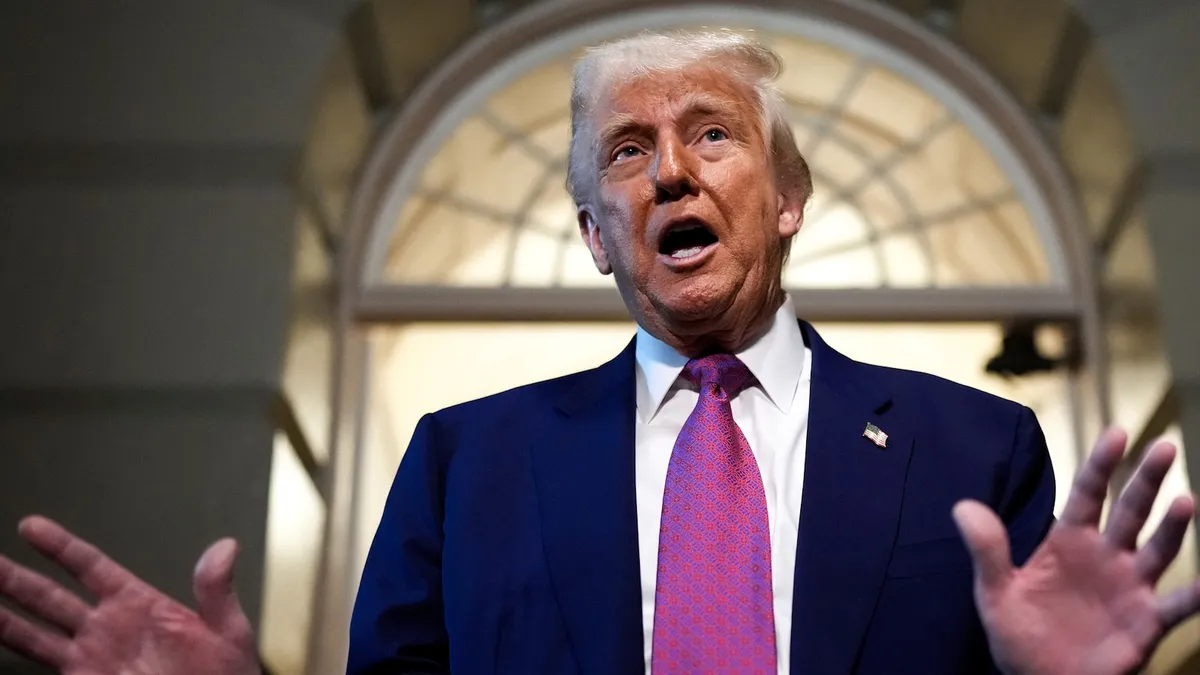
President Donald Trump is poised to announce a groundbreaking initiative at the White House on Tuesday afternoon. This plan involves the development of a massive missile shield system designed to protect the United States from potential threats, particularly from North Korea and other adversaries. According to three U.S. officials, the project bears resemblance to the infamous Star Wars program initiated by President Ronald Reagan, with experts estimating its cost could range from tens of billions to upwards of hundreds of billions of dollars, contingent on its design and implementation.
During the announcement, Trump will be accompanied by Defense Secretary Pete Hegseth and General Michael Guetlein, who serves as the Pentagon's vice chief of space operations. Guetlein is expected to take the lead on the ambitious Golden Dome project, as per one official’s statement. Trump has long advocated for a U.S. missile defense shield akin to Israel's Iron Dome, particularly after witnessing Israel successfully intercept missiles and drones during Iran's attacks in 2024.
While military officials previously expressed that there was no immediate need for such a shield to protect the U.S., citing existing missile defense systems, critics have questioned the necessity of a comprehensive defense system for a nation not currently facing missile threats from neighboring countries like Canada and Mexico. Furthermore, the geographical advantages of being buffered by two oceans further diminish the perceived need for such a system. Nonetheless, Trump's vision of constructing "the greatest dome of them all" resonated strongly with his supporters, leading the Republican Party to include the construction of a U.S. missile shield in its platform for the upcoming 2024 elections.
In January, Trump signed an executive order mandating Hegseth to expedite the development of this missile defense initiative. In the order dated January 27, Trump outlined the dire need for protection against the "catastrophic threat" posed by various missile types, including ballistic, hypersonic, and cruise missiles. Following this directive, the Defense Department has assembled a team of top experts to explore a wide range of options that integrate current U.S. missile defense technologies with innovative advancements to create a reliable defensive shield for the homeland.
Despite the excitement surrounding the initiative, several questions remain unanswered regarding the system's scale and comprehensiveness. For instance, will the Golden Dome be designed to cover the entire U.S. territory or focus primarily on protecting major metropolitan areas? The project's scale will significantly influence its development timeline, which could extend over several years, even with technological advancements such as remote sensing and uncrewed aerial systems. Additionally, there are concerns that funding for this program may divert resources away from other crucial military projects, such as the Air Force's initiative to replace 400 aging intercontinental ballistic missiles.
Earlier this month, the Congressional Budget Office (CBO) estimated that the U.S. may need to invest between $161 billion and $542 billion over the next 20 years to establish a network of space-based interceptors. These projections have benefitted from a decline in launch service costs; however, the CBO noted that the increasingly advanced technology employed by North Korea and the ambitious scope of Trump's objectives will keep overall expenses high.
Israel's Iron Dome system, which intercepts rockets and mortar fire, serves as a model for the proposed U.S. defense mechanism. This multibillion-dollar system was pivotal in protecting Israel during an attack last April when Iran launched approximately 300 missiles and drones in retaliation for an Israeli airstrike. Currently, the U.S. relies partially on the Ground-Based Midcourse Defense program, designed to intercept rogue long-range missiles from nations like North Korea. However, its effectiveness would be limited in the event of a large-scale assault from a more formidable adversary such as Russia.
Expanding the current missile defense capabilities to encompass the entire United States could result in exorbitant costs, especially while the country simultaneously seeks to bolster defenses against cyber and space threats. As nations like China and Russia advance their hypersonic weaponry, the implications for U.S. defense strategies become increasingly complex. In the past year, Trump has highlighted the U.S. investment of approximately $3 billion to support Israel in developing its Iron Dome system. "In my next term, we will build a great Iron Dome over our country, a dome like has never been seen before, a state-of-the-art missile defense shield that will be entirely built in America," Trump declared at a June rally, promising to create “the greatest dome of them all.”
ABC's Nathan Luna contributed to this report.